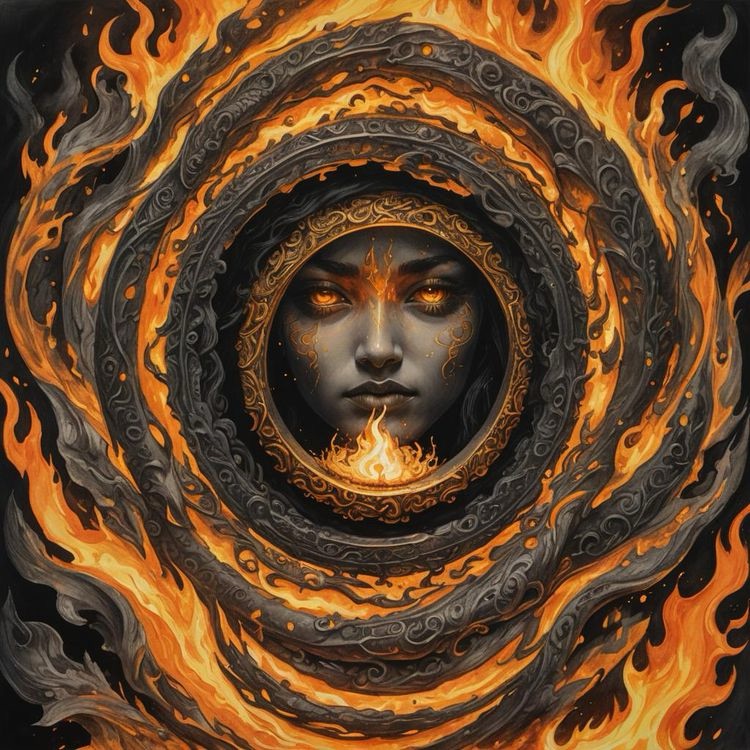Breaking Generational Curses
Throughout history, families have carried unseen burdens, generational curses, cycles of inherited trauma, and patterns of behavior that repeat through time. These “curses” aren’t mystical forces, but deeply embedded patterns, repeated behaviors, mindsets, or trauma and response patterns that pass from one generation to the next. The ties that bind us to these cycles can feel as inescapable as the chain of a black magic curse, yet within us lies the power to break free and forge a new path of strength, healing, and freedom.
One of the ways we become bonded to these generational patterns is through relationships and marriage. When two people come together in marriage, they don’t just unite their present lives, but their family histories, emotional patterns, and even unresolved traumas. In many ways, we inherit not just the joys of a union, but the unresolved burdens of each partner’s family line. These bonds, like the powerful symbol of a ring, can either trap us in cycles of the past or become tools of transformation and freedom.

The Ring of Power – A Symbol of Bondage
In The Lord of the Rings, J.R.R. Tolkien’s legendary tale, the One Ring is a symbol of immense power, but also of destruction and control. Those who bear the Ring are often seduced by its promises of greatness, yet slowly they fall victim to its curse, becoming slaves to the power it holds over them. The Ring binds, dominates, and manipulates, trapping its wearers in a cycle of obsession and decay. This is a powerful metaphor for the generational curses we carry, cycles of pain, trauma, and patterns passed down through our family lines.
Just as the Ring corrupts those who seek to wield its power, generational curses can act like invisible chains, compelling individuals to repeat the mistakes and pains of their ancestors. Marriages, like the ring itself, bond two people together in love and unity, but if left unchecked, they can also bind us to the unhealed wounds of the past, perpetuating cycles of pain, dysfunction, and limitation.

Breaking the Cycles – Awareness and Courage
However, just as Frodo chooses to destroy the Ring, we too have the power to break these generational cycles. The process begins with awareness, acknowledging the inherited patterns that have shaped our lives. These patterns may be emotional, behavioral, or spiritual, and they often manifest as repeated cycles of addiction, abuse, abandonment, or fear. Once we recognize these patterns, we can begin the work of healing.
Tempering is the process by which metal is strengthened by controlled heat and cooling. In much the same way, healing from generational curses involves going through the “fire” of awareness and reflection. It is not a painless process, but it transforms us, making us stronger and more resilient. This strength allows us to break the cycles that once held us captive.

It takes courage to choose a different path. In the face of generational trauma, there is a temptation to repeat the same cycles because they are familiar, even if they are harmful. But with courage, we can choose new outcomes, by forgiving where there was once resentment, by creating healthy boundaries where there were once patterns of abuse, or by seeking love and compassion where there was once control.
Forging a New Path – Healing the Family Tree
When we break these cycles, we do more than heal ourselves, we heal our family tree. Just as trauma and dysfunction are passed down through generations, so too can healing. By transforming our inherited pain into wisdom, we create a ripple effect that can impact not only our children but future generations. This healing isn’t just personal, it is ancestral.
In choosing to break generational curses, we don’t deny the past but rather, we honor it by refusing to let it dictate our future. We acknowledge the suffering of those who came before us, but we also recognize that we are not bound to repeat their mistakes. With awareness, healing, and strength, we forge a new path of generational freedom, transforming the weight of our inherited pain into wisdom and resilience.
The Power of Choice – Transforming Pain into Wisdom
The true power in breaking generational curses lies in the choice to transform pain into wisdom. This transformation is not about erasing the past, but about integrating its lessons. Like the tempering of steel, the fire of our trials can either destroy us or make us stronger, it all depends on how we respond.
Through marriage and relationships, we have the unique opportunity to either perpetuate old patterns or forge new ones. Together, couples can create a bond not of destruction, but of healing, supporting each other as they face the inherited burdens of the past, and choosing, together, to break the cycles that have bound their families for generations.
A Ring of Freedom
Just as Frodo’s journey to destroy the Ring and ended the cycle of darkness in Middle-earth, our journey of self-awareness and healing can bring about the end of generational curses. In doing so, we create a true ring of power and freedom. one forged not in bondage, but in love, courage, and the power of choosing a different path.

